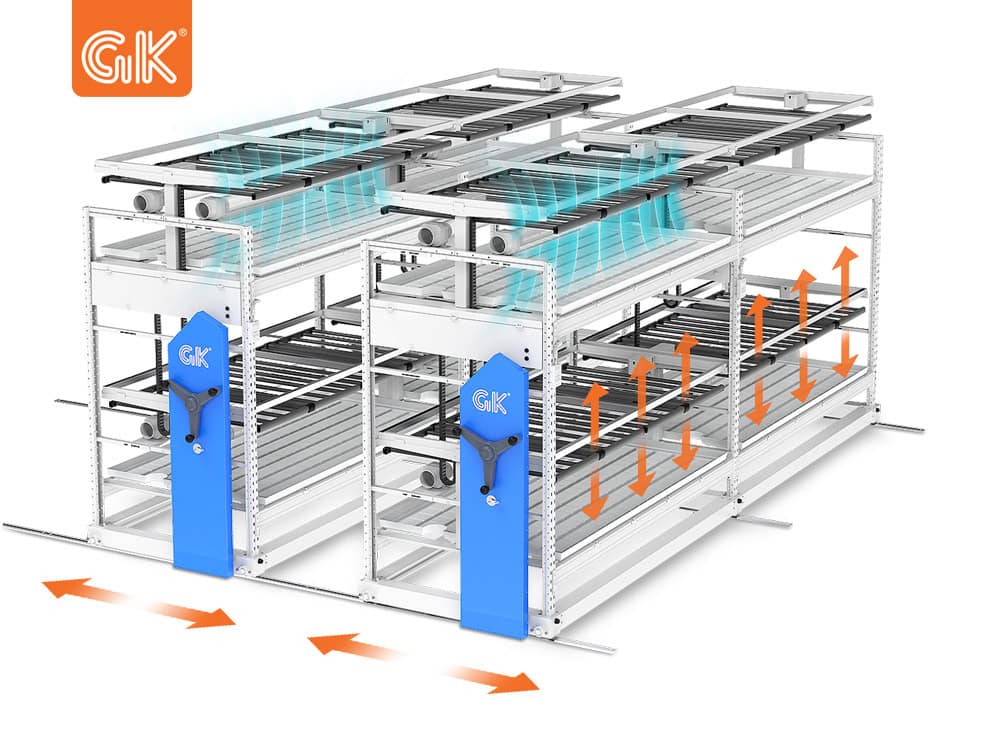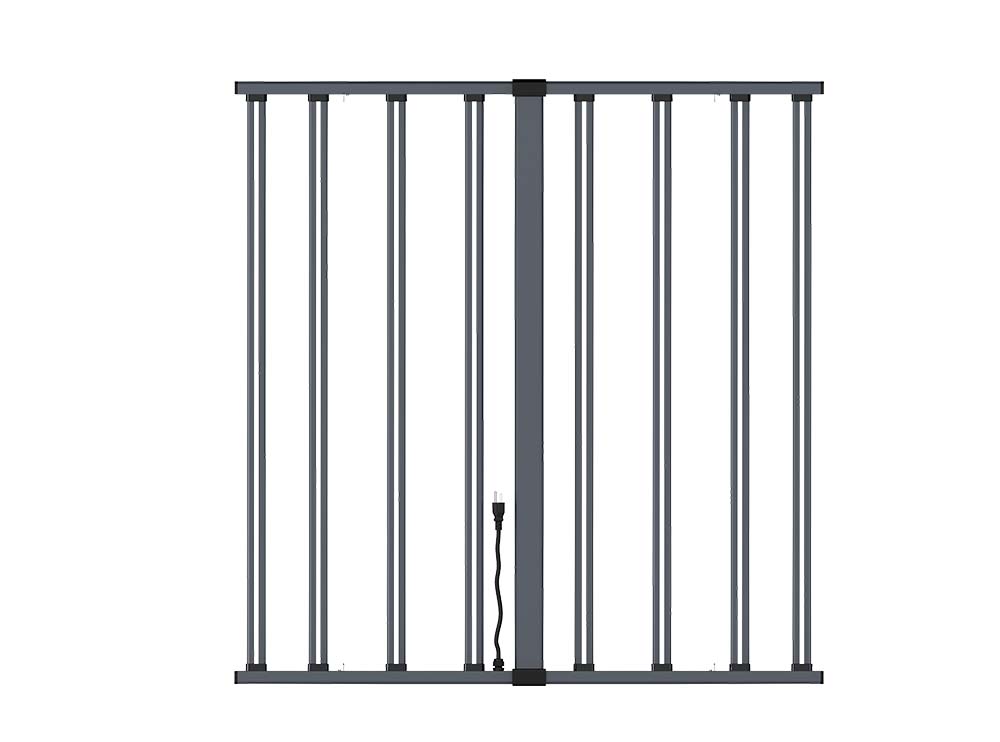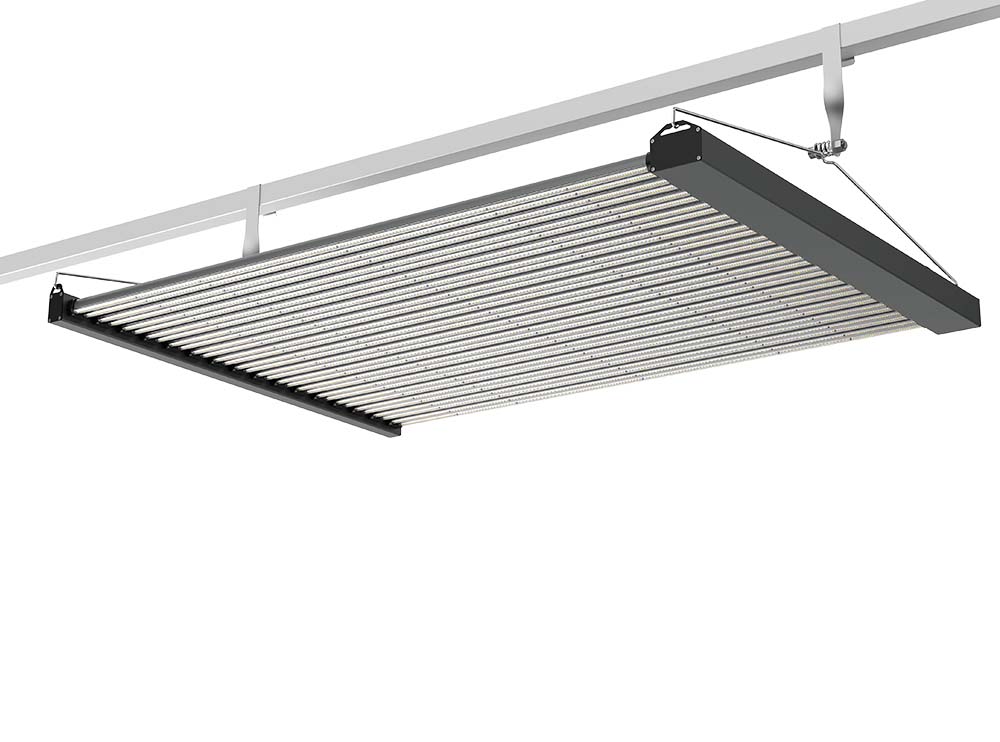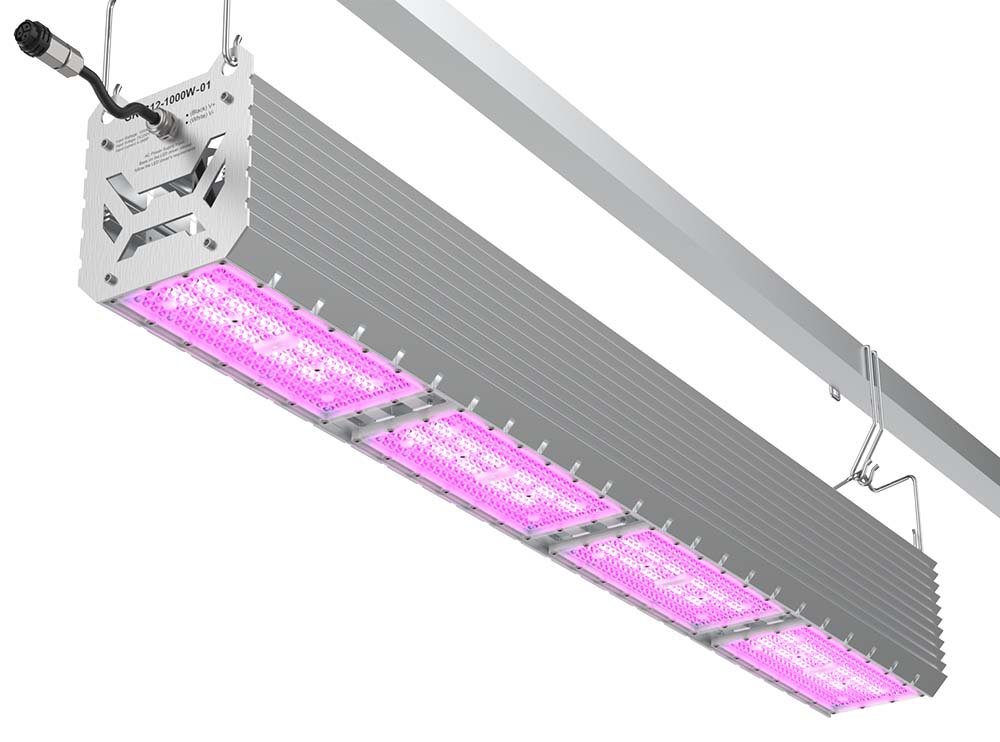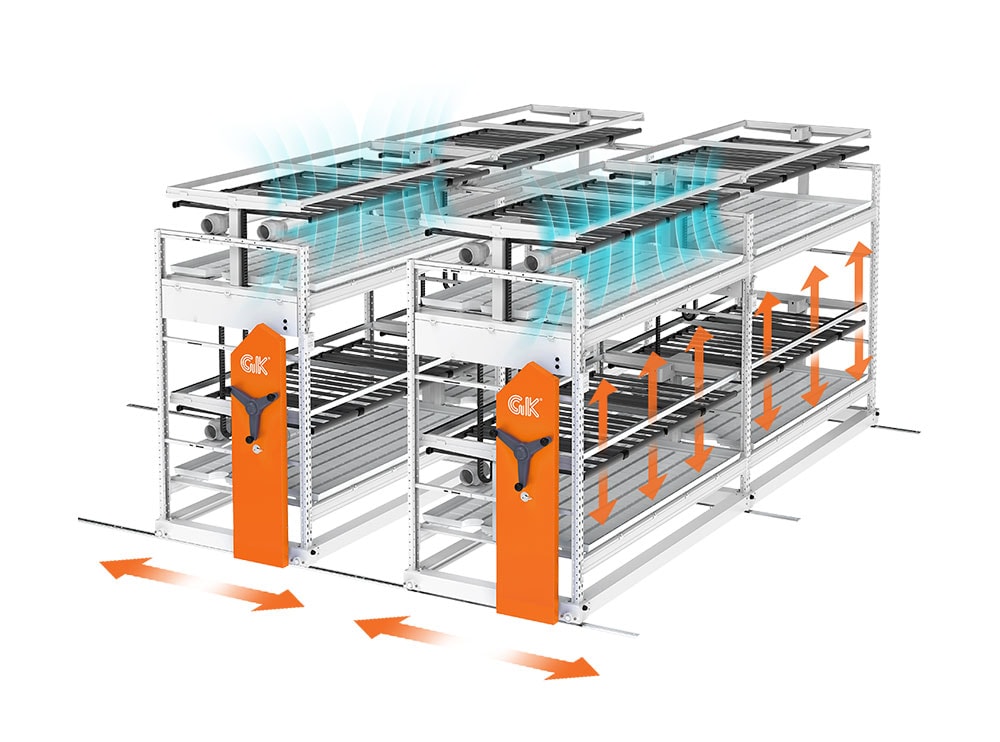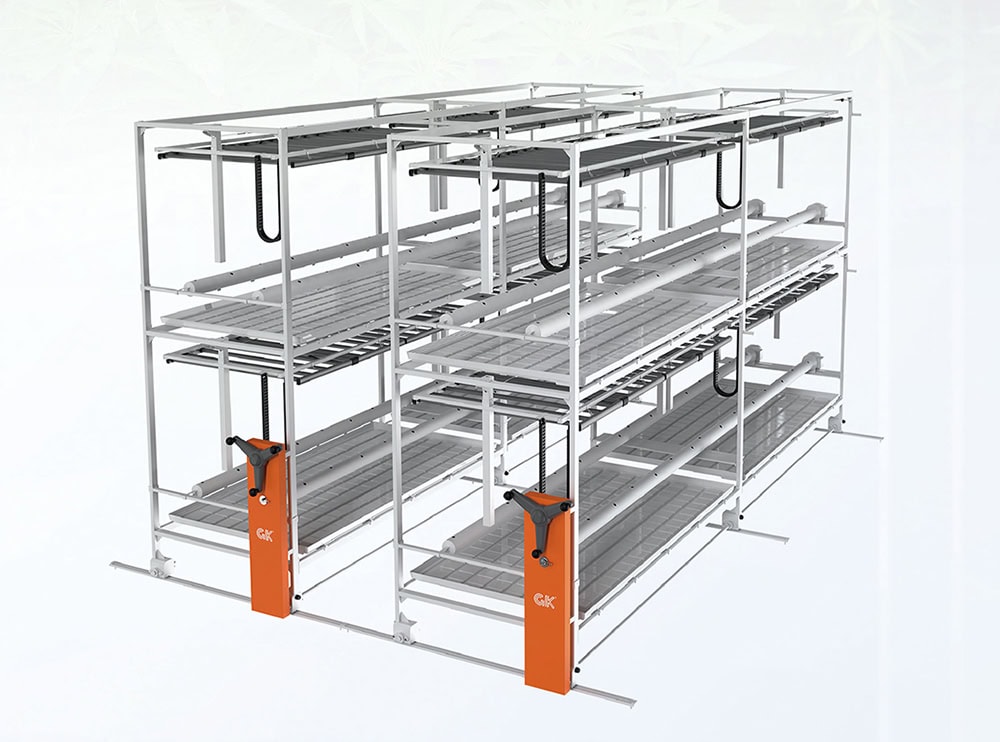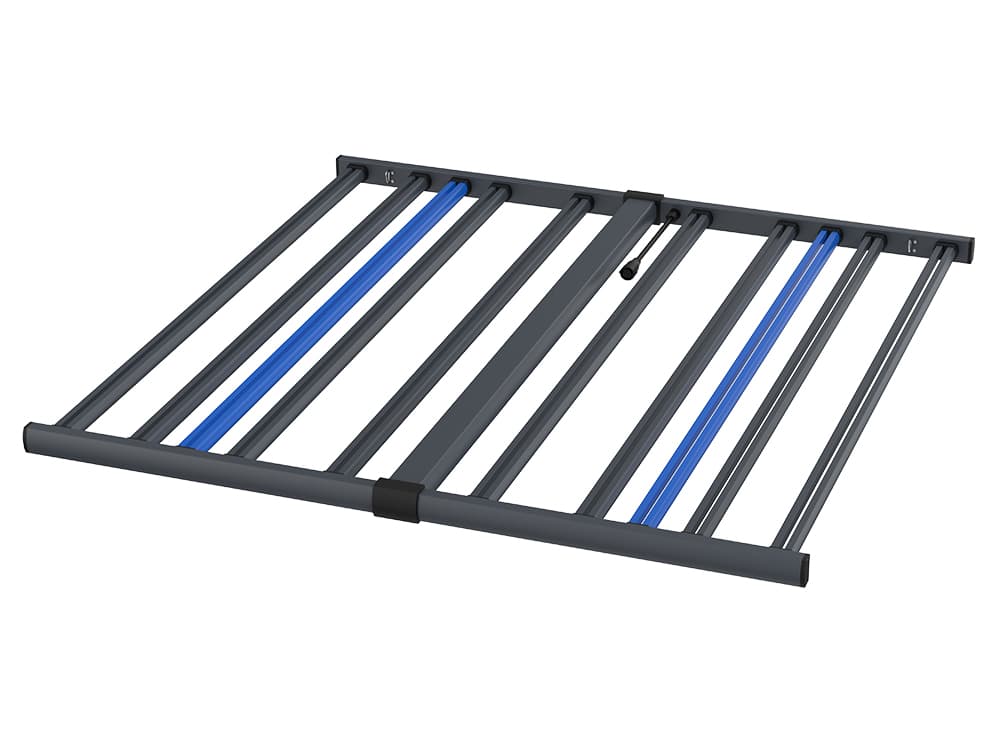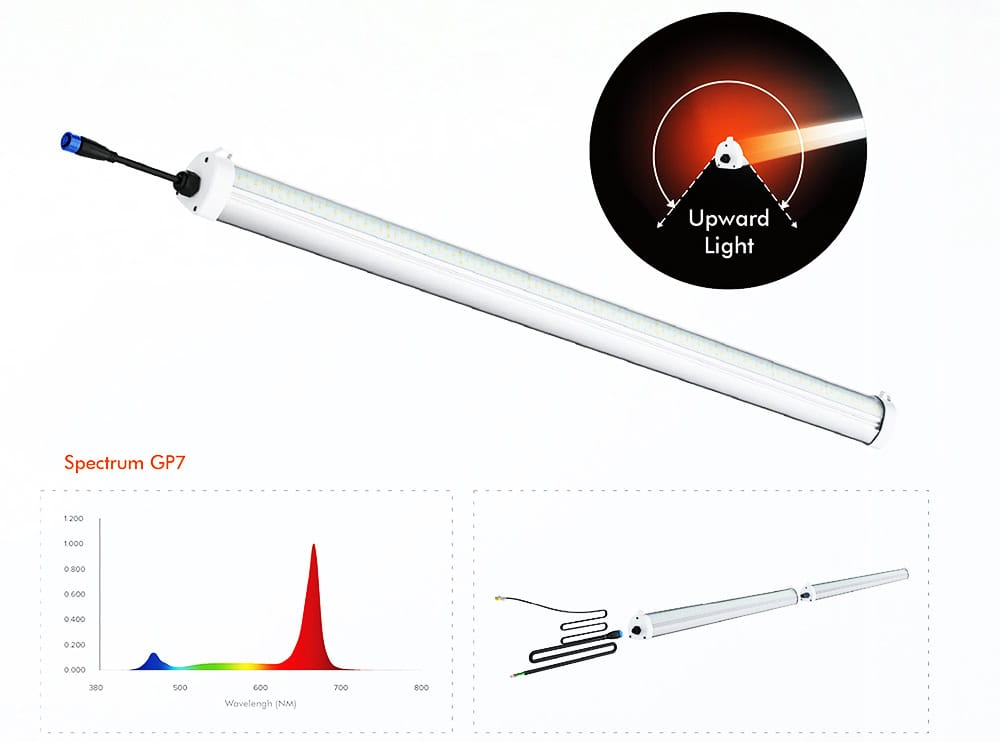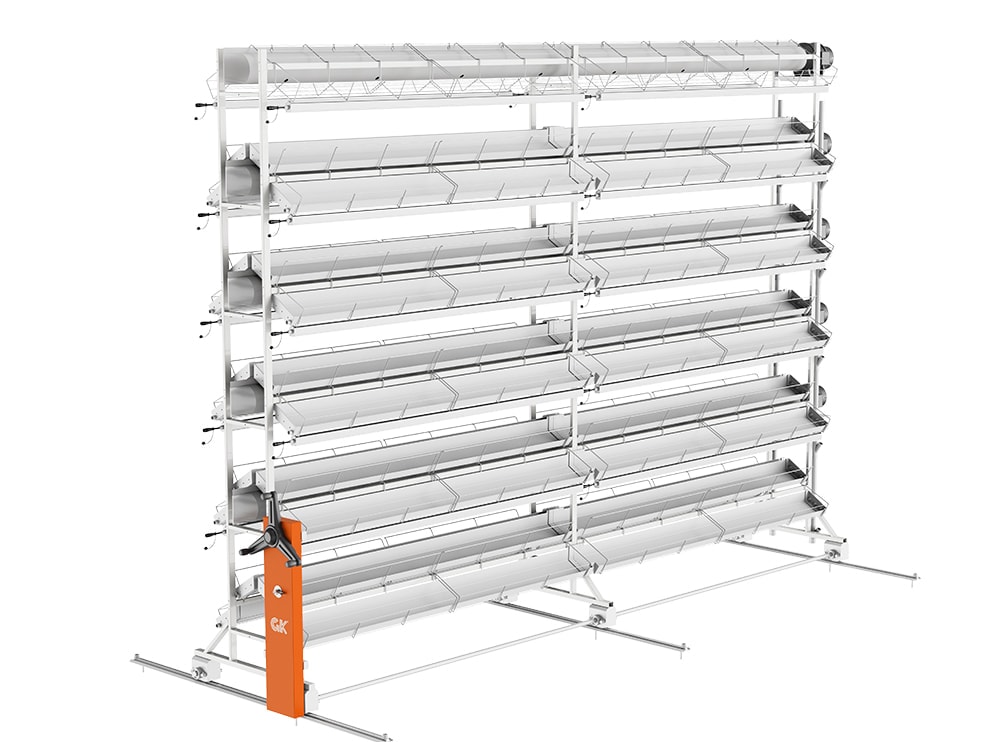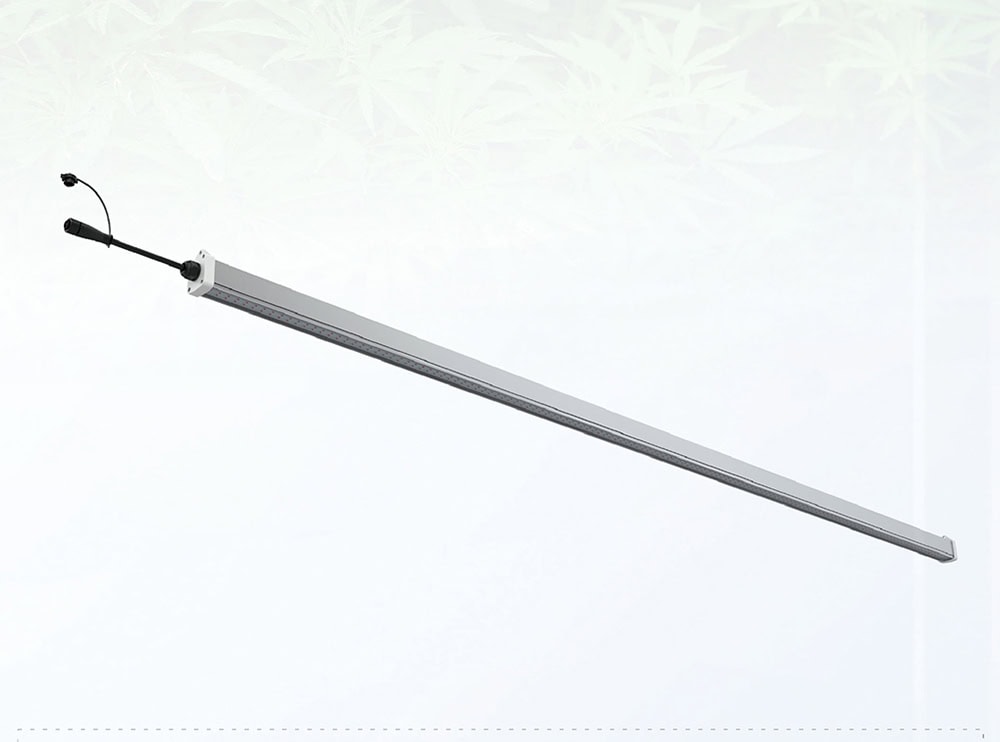Plants can grow only when photosynthesis is greater than respiration. This critical point is called the light compensation point. For example, the light compensation point of tomato is 51.6μmol/s/m², then the effective radiation of photosynthesis must be greater than 51.6μmol/s/m² to work.
Lux is the intensity felt by the human eye. For plants, it is measured by the intensity of the light spectrum that is effective for photosynthesis. This is called photosynthetic effective radiation, abbreviated as PAR or PPF. There is no difference between PPF and LUX. convert. PPFD is the strength per unit area of the PPF. Usually a 20w T8 tube LED can only provide about 24μmol/s/m² of PPFD at a height of 30cm from the plant. If it is used to grow tomatoes, then at least 3 lights. But tomatoes will grow upward. In practical applications, foreign greenhouses can only get PPFD of 90μmol/s/m² by using 630w LEDs hanging in a 4-meter high greenhouse, and using 600w agricultural sodium lamps can reach 120μmol/ s/m², and the price is about 1/5 of that of LED, so agricultural sodium lamps are mainly used in greenhouses. Let’s talk about the light saturation point. When the PPFD reaches this point, the photosynthesis rate of the plant is the fastest, but beyond this point, it will not grow any more, and it will even have adverse effects. The light saturation point of the tomato is 1998μmol/s/m². The lamp with the highest power in the current application is a 1000w double-ended agricultural sodium lamp with a PPF of 2100μmol/s. When it is hung in a greenhouse with a height of 6 meters, the PPFD is only 200μmol/s. About /m², the PPFD of sunlight at noon in summer is more than 2000μmol/s/m², so any artificial light source on earth cannot replace sunlight.
There are two types of application scenarios for the selection of plant fill light, home or professional agricultural plant fill light (such as plant factories, greenhouses), the latter involves a lot more optical design.
The existing plant fill lights on the market include fluorescent lights, HID lights, and LED lights. Regardless of the purpose, LED lights are recommended. This is mainly because, compared with traditional plant lights, LED plant lights have the following advantages: high light efficiency (energy saving), wide spectrum coverage (easy to obtain monochromatic light or full spectrum), adjustable light intensity spectrum, long life , less heat (can be used for short-range lighting, saving planting space), diversified forms of lamps (can meet the needs of different application scenarios), and high safety in use.
For example: In our planting experiment, vegetables that take 45 days to mature in the natural environment can grow into 45 days after planting for 30 days using LED plant fill light.
If you are a professional agricultural grower, before buying a plant fill light, it is very important to first understand the planting needs!
- What plants should be supplemented with light? Because different plants have different requirements for light intensity and spectrum, this affects the selection of fill light power and spectrum customization; spectrum customization: the spectrum of artificial light sources is carefully designed according to the needs of plant growth, professional plant fill lights will meet The spectrum can be customized according to the needs of different crops and different growth stages, and the spectrum can significantly affect the lighting effect.
- The area and layout of the fill light area not only affects the selection of lamp power, but also the selection of lamp size and style;
- The space environment, such as the lighting conditions in the area, the shading situation, the height at which the lamps can be hung, etc., provide a reference for the selection of the material of the lamp body (such as whether it is UV resistant), the type of light source (thermal light source or cold light source) and the suspension load ;
- Estimated cost of fill light, etc. The plant lighting market combines the physiological characteristics of plants with lighting fixtures. The products are different but the quality is also uneven. While considering the supplementary light effect, the safety certification of the lamps, the warranty period of the lamps and the after-sales service should also be considered. Professional The problems should be handed over to professional people, and let the professional people speak with data.
Lighting products have the following advantages, which can be the first choice for choosing plant fill light.
- More professional spectrum, which means better quality of planting varieties, shorter planting cycle, higher yield, more active ingredient content and more energy saving;
- High light efficiency;
- Efficient heat dissipation;
- Good optical uniformity and no glare;
- High optical utilization rate;
- Good protective performance.
So how do you choose a fill light?
- How to choose the type of lamp?
As far as the current development trend of fill light is concerned, as a new type of light source, LED has the characteristics of energy saving and environmental protection, long life, short response time, etc., and has obvious advantages in the field of agricultural fill light. Compared with traditional light sources, LEDs can adjust the spectrum and radiation intensity according to needs; secondly, LEDs are cold light sources, and close-range irradiation will not cause burns to crops. Is it possible to directly choose the LED fill light? The answer is not necessarily. The climatic conditions of the location where the landlord is located should be taken into consideration. If it is in the north and the winter is cold, it is recommended to mix LED lights and high pressure sodium lights to keep the greenhouse at a certain temperature. If you are in the warmer south, you can use LED fill lights alone.
- The type of crops is the key factor in choosing lamps
The “Quantities and Units of Electromagnetic Radiation for Plants” released by the American Society of Agricultural and Biological Engineering in 2017 extended the spectral range that has an effect on plants to 280nm-800nm, which is more complicated. The wavelengths of light are different. For example, blue light can induce the accumulation of flavonoids and anthocyanins, so for tomato growers, increasing the proportion of blue light can promote the formation of lycopene and flavonoids in tomatoes and improve the quality of tomatoes.
- The effect of photoperiod
Photoperiod refers to the perception and response of organisms to the alternation of light and dark periods in the circadian cycle. To put it simply, some plants have to go through a certain photoperiod to form flower buds. This also reflects the adaptation of plants in different geographical locations to the climatic environment, ensuring that plants can complete spring, summer and autumn in suitable seasons. The life process of real and winter storage.
In addition, there are many plants whose flowering is not very responsive to the length of the day, and they can bloom after a period of time under unsuitable photoperiod conditions. Different varieties of the same plant may have different requirements for sunlight. The main way to artificially adjust the photoperiod of plants is to artificially supplement the light to prolong the light time, or artificially block the natural light to make the plants enter the dark period in advance. So how long it takes depends on the type of plant you are planting. The photosynthesis required for plant growth is inseparable from light, but light of different wavelengths has obvious differences for plant growth. Red light and blue light can provide the most abundant nutrients for plant growth. Blue light – is beneficial to the growth of stems and leaves of plants. Red light – is beneficial to the flowering and fruiting of plants. Different wavelengths have different effects on plant growth.
200-280nm strong ultraviolet C-band, has serious adverse effects on plant growth.
280-315nm ultraviolet B band, easy to cause plant fading
315-380nm UV A-band, no effect on plant growth
The 380-400nm visible light band begins, and the chlorophyll absorption process begins. UV protection lamps or plastics can effectively block light with wavelengths below 400nm.
400-520nm includes violet, blue and aqua light. Chlorophyll strongly absorbs light in this band and promotes photosynthesis. Light in this band helps the stems and leaves of plants to grow.
520-610nm includes green, yellow and orange light. Chlorophyll and other pigments such as carotenoids are poorly absorbed.
610-720nm red light band. Chlorophyll has the strongest absorption and greatly promotes photosynthesis. Light in this band helps plants bloom and bear fruit.
720-1000nm near infrared band. Chlorophyll is basically not absorbed. Light in this band has some effect on flowering and germination.
Vertical farm lighting is an artificial lighting solution for environments where both planting area and natural light are limited. It has a strong application prospect in the effective use of urban environment to grow crops.
Greenhouse lighting, appropriate artificial lighting system plays a pivotal role in various modern greenhouses in horticultural production, optimizing crop appearance, growth cycle, nutrients and flavors and other factors by adjusting the light formula of different crops.
Research horticultural lighting provides tailored solutions for specific plant types, helping researchers explore how light affects plant growth and development.

